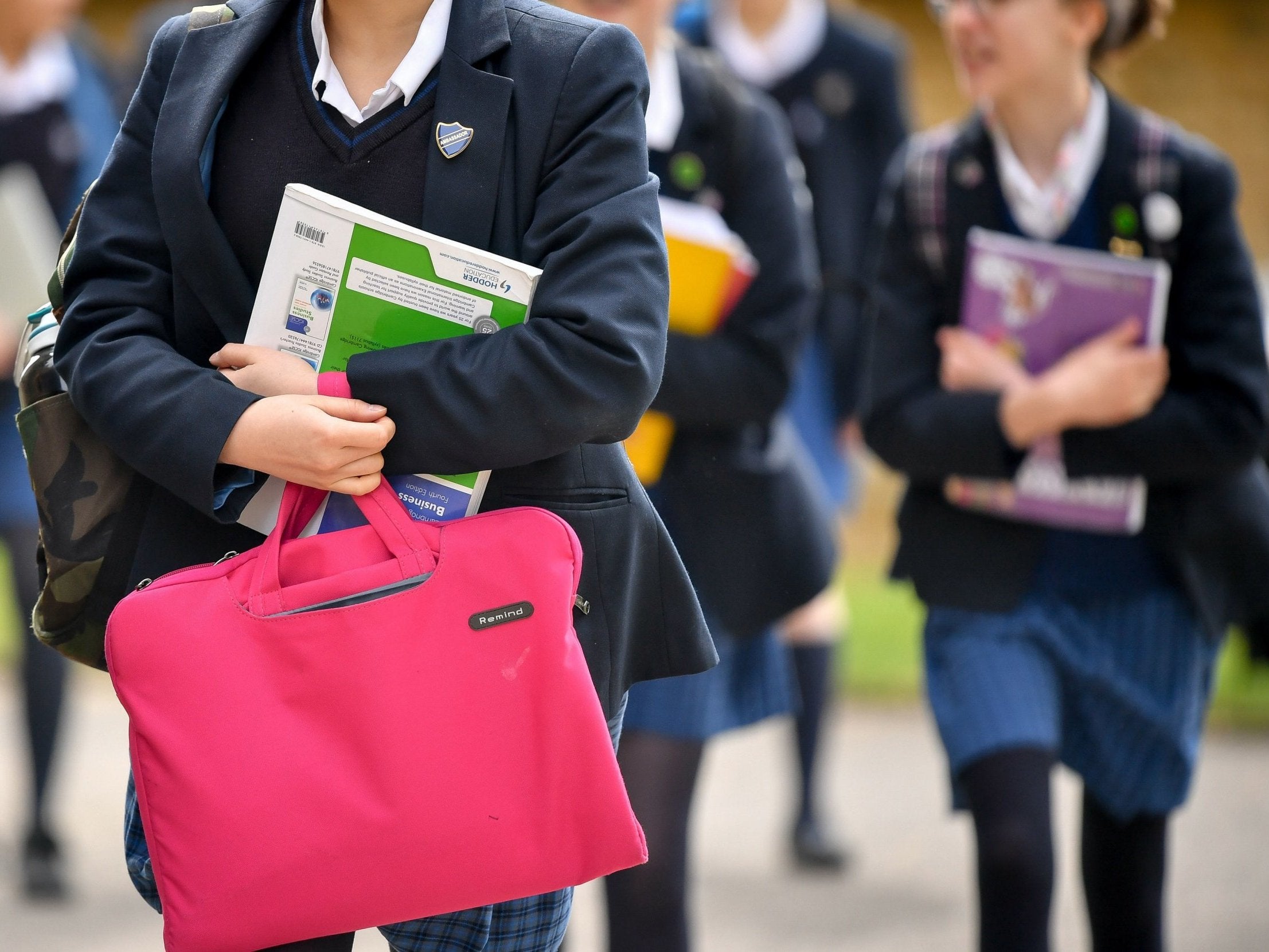Number of pupil exclusions from schools rises to highest point in decade amid funding cuts
Funding cuts to schools and children’s services have made it harder to provide early intervention, unions say

Your support helps us to tell the story
From reproductive rights to climate change to Big Tech, The Independent is on the ground when the story is developing. Whether it's investigating the financials of Elon Musk's pro-Trump PAC or producing our latest documentary, 'The A Word', which shines a light on the American women fighting for reproductive rights, we know how important it is to parse out the facts from the messaging.
At such a critical moment in US history, we need reporters on the ground. Your donation allows us to keep sending journalists to speak to both sides of the story.
The Independent is trusted by Americans across the entire political spectrum. And unlike many other quality news outlets, we choose not to lock Americans out of our reporting and analysis with paywalls. We believe quality journalism should be available to everyone, paid for by those who can afford it.
Your support makes all the difference.The number of permanent exclusions from schools in England has reached its highest point in nearly a decade, according to the latest government statistics.
The figures showed that schoolchildren were permanently expelled on 7,900 occasions in 2017-18, compared to 7,700 in 2016-17 – a rise of 3 per cent.
This is equivalent to about 42 children a day being expelled, a slight rise from 41 per day in 2016-17. It is the largest number of permanent exclusions since 2008-2009.
Funding cuts to schools and children’s services have made it harder to provide early intervention and support those with challenging behaviour, headteachers’ unions said.
There has been a rise in the number of students being excluded for assaults against adults (13 per cent) and pupils (1 per cent), bullying (28 per cent) and drug and alcohol-related reasons (13 per cent).
Persistent disruptive behaviour remains the most common reason for pupils being expelled, accounting for more than a third of permanent exclusions, but the overall number expelled for this reason has fallen.
Temporary exclusions have also risen in England’s schools by 8 per cent from 381,900 in 2016-17 to 410,800 in 2017-18, according to the Department for Education (DfE) figures.
The report says the rise has been driven by secondary schools, which saw the fixed-period exclusion rate rise from 9.4 per cent to 10.13 per cent over the period.
But the expulsion rate has remained stable compared to last year – with 0.1 per cent of pupils affected.
Geoff Barton, general secretary of the Association of School and College Leaders, said: “Exclusion rates have risen in recent years because of cuts to both education and local services which have made it more difficult to provide early intervention and support to children with challenging behaviour, and prevent that behaviour from escalating to the point of exclusion.
“Schools do not take the decision to exclude lightly, and when they do so it is in the interests of other children and staff who have a right to learn and work in a safe and orderly environment.”
He added: “Schools are working hard to avoid having to exclude pupils, but the government must do more to back them up with an improved level of funding for education and investment in local services which provide support to vulnerable families and children.”
The rise in permanent exclusions in recent years follows a downward trend from 2006-07 until 2012-13.
Although it has been rising again since then, rates are still lower now than in 2006-07.
Paul Whiteman, general secretary of school leaders’ union NAHT, said: “It is not possible or helpful to consider exclusion as a stand-alone problem. Schools and young people are facing a double-whammy of cuts to education funding as well as the impact of cuts to the health and social care services on which they desperately rely on for support. It is no coincidence that permanent exclusions have started to rise as budget cuts have started to bite.”
In May, the government announced that headteachers would be accountable for the exam results of students they exclude under changes aimed at reducing the number of expulsions – a recommendation made in a report by former children’s minister Edward Timpson into the thousands of pupils disappearing from school registers.
Damian Hinds, then education secretary, endorsed his findings. His successor Gavin Williamson is yet to set out his education policies.
After the latest statistics were revealed, a DfE spokesperson said: “There is no right number of exclusions, and although exclusion rates remain lower than 10 years ago, we have been clear that exclusion from school should not mean exclusion from education.
“Headteachers do not take the decision to exclude lightly and we will continue to back them in using permanent exclusion as a last resort. Following the Timpson review, we are consulting on how to make schools more accountable for the students they exclude, working with Ofsted to clamp down on off-rolling, and calling on local areas to explain or change trends in exclusions for certain groups of children.”
Join our commenting forum
Join thought-provoking conversations, follow other Independent readers and see their replies
Comments